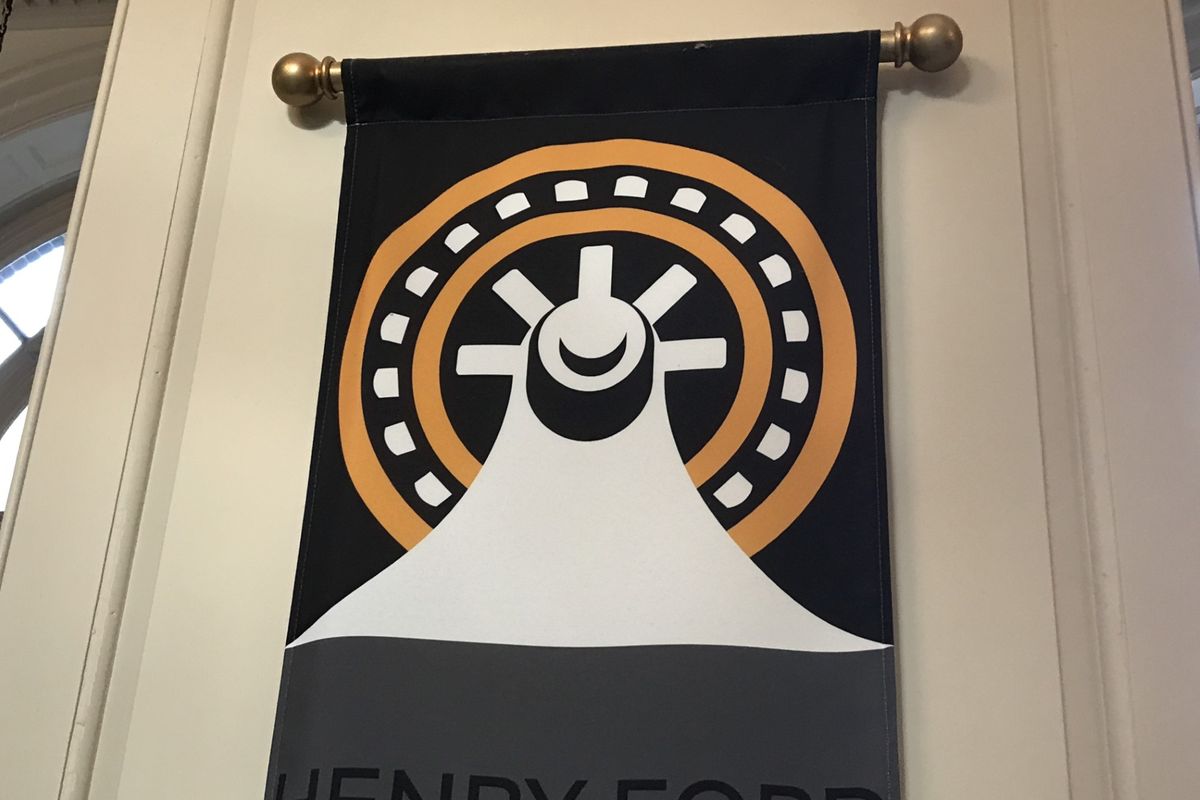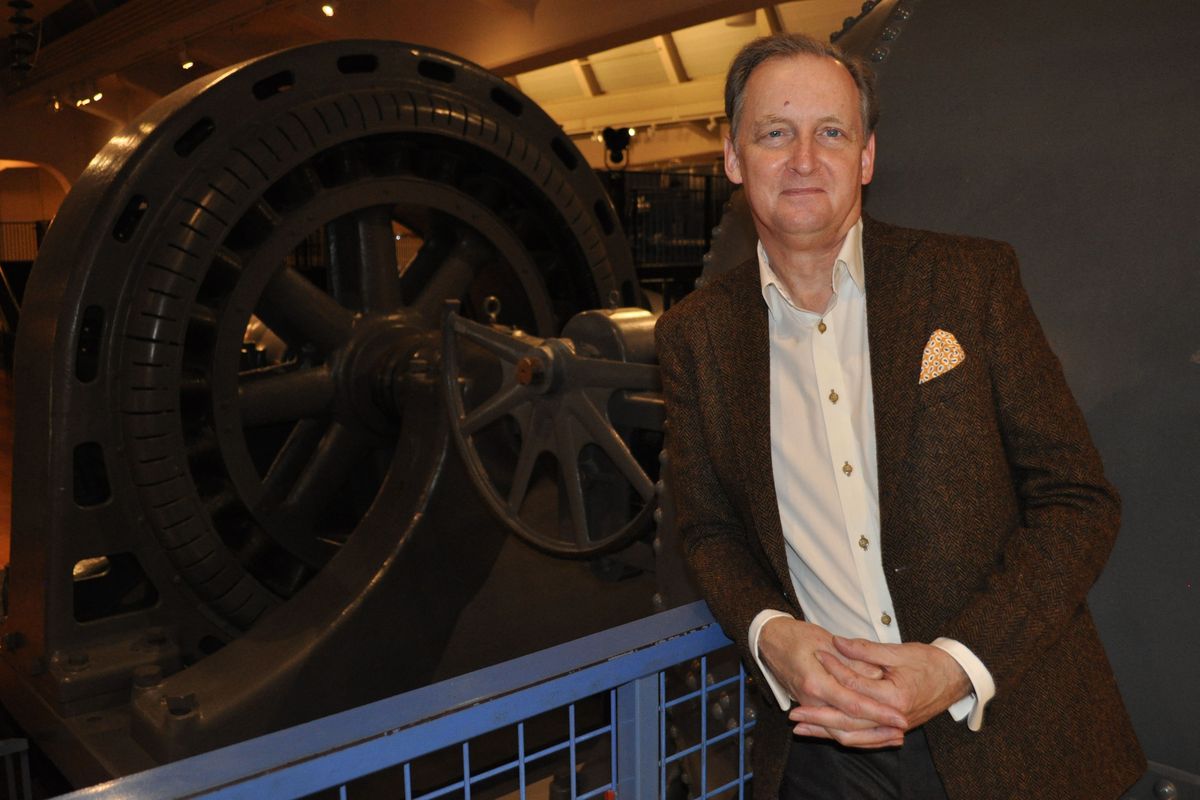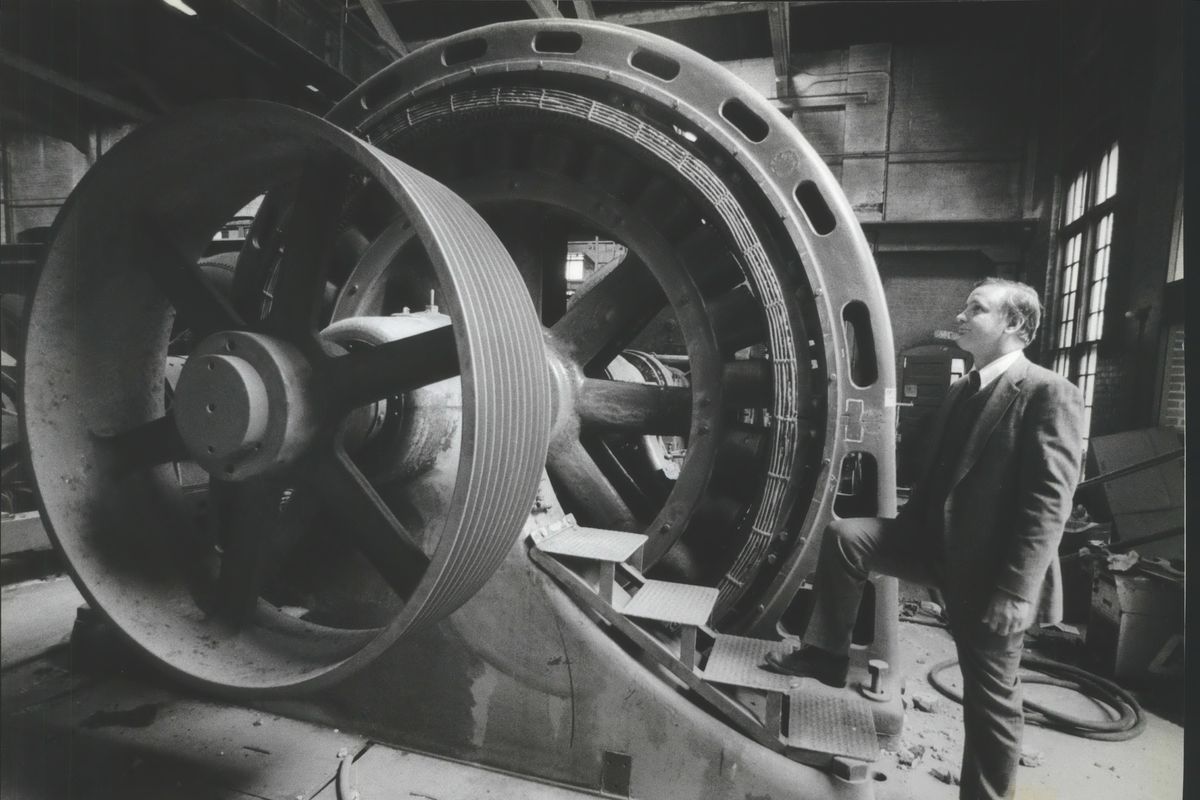One image was selected to represent the vast holdings of the Henry Ford Museum in Michigan: It’s from Spokane
J. Marc Greuther, vice president of historical resources and chief curator of the Henry Ford Museum of American Innovation in Dearborn, Mich., stands Jan. 2 in front of a generator attached to a water turbine built in 1903 and used in the Monroe Street Dam in downtown Spokane until it was removed in 1990 and shipped to the museum. The turbine is on display in the museum’s “Made in America” exhibit. Greuther was involved in the project to restore it as a museum piece. (JONATHAN BRUNT/THE SPOKESMAN-REVIEW)
DEARBORN, Mich. –The logo for the Henry Ford Museum, the massive collection of cars, trains, planes and technology showcasing American ingenuity, isn’t the Model T that gave the museum’s founder much of his vast riches. Nor is it the dominating locomotive that towers over guests. Nor any of the presidential limos, including the one in which JFK was shot.
No, among the 9 acres of items on display, the museum selected for its likeness a generator trucked away from Spokane more than 30 years ago.
The generator, substantial, if not massive in it’s own right, is attached to turbine No. 4 removed from the Monroe Street Dam in 1990. It would have been scrapped like the other four turbines in the dam, but for multiple strokes of luck.
Since 1992, it has been one of the main exhibits on electrical generation at the museum in Dearborn.
“That’s a great example, if you will, of a connection that was made that allowed the institution to tell the story in a convincing and really powerful way and preserve a piece of equipment,” said J. Marc Greuther, vice president of historical resources and chief curator of the Henry Ford Museum, who worked on the project readying the turbine for display in the museum.
By the late 1980s, Washington Water Power, now Avista, determined that the dam’s powerhouse built in 1889, which was just east of the Monroe Street Bridge, was deteriorating, and the turbines inside it were obsolete and not worth maintaining.
“We decided to redevelop the project, which at the end of the day meant razing the existing building and everything in it and putting in a new powerhouse which is substantially underground,” said Steve Wenke who was Washington Water Power’s project manager for the removal of the turbines and powerhouse of the Monroe Street Dam.
The outcome of the project: “We basically replaced five units with one unit and tripled the output.”
Company officials advertised the old turbines in trade publications as free for the taking, Wenke said, not expecting any bites.
Meanwhile, in Dearborn John Bowtich of the Henry Ford Museum was contemplating a vast change to the museum that would celebrate American innovation.
The museum had a vast collection on steam power. But Bowtich didn’t believe the exhibit led most visitors to a greater understanding of electricity or even steam power.
“It was like an overly encyclopedic perspective on steam power,” Greuther said. “If you didn’t know what a steam engine was, here’s like hundreds of them, you know?”
Bowtich wanted to transform the exhibit on power to diversify it and make it more understandable and welcoming to visitors.
It was around this time that he saw in a publication of the Society for Industrial Archaeology a notice from Washington Water Power.
“And in a newsletter in spring of 1990 he saw this, it was on the back of the newsletter: ‘free water turbines,’ ” Greuther recalled.
Wenke and others at Washington Water Power were shocked they got a bite, but they took pride in salvaging a piece of Spokane history.
The turbine was newer than the first three turbines and was installed in the dam in 1903, when the dam was expanded to provide electricity to mines in North Idaho. The turbine originally had its own penstock – a tube that took water from the river to send through the turbine. But penstocks for all the turbines had been combined by the time the turbines were replaced.
Turbine No. 4 was selected mostly because it was in the best condition, Wenke said.
Coincidentally, the Henry Ford Museum already had a generator from the Bunker Hill and Sullivan mine in Kellogg from the late 1800s, a time before electricity for the mine came from Spokane. That generator is now on display with the Spokane turbine as an example of how the power to transport electricity led to vast changes in the early 1900s.
Washington Water Power agreed to load the turbine on the trucks that transported the turbine over the Rockies to Michigan in 1991, Greuther said.
“So, it’s a bit like the free kitten,” Greuther said. “I mean, it’s one thing to get it, and then all the fun starts.”
Greuther worked at the museum at the time and was called in to help with some of the restoration, in particular to deal with rusting and deterioration.
But simply restoring it wouldn’t make it a great object for museum display. Museum officials needed to open it up enough for people to see inside.
“Collecting a computer doesn’t help someone understand how it works unless they can read circuit boards. And then even if they can, they’d still have to see them, you know? So we’re always trying to figure out how do you peel the right layers away,” Greuther said.
A large window was cut into the unit and visitors can climb a few steps onto a platform and peer inside to see the turbines that formerly were spun by the Spokane River.
Wenke traveled to the grand opening of the exhibit in late 1992 and says anyone from Spokane who finds themselves near Detroit should plan a visit to the Henry Ford.
“It’s kind of neat, because you can walk in there and through all this stuff, there is a piece of Spokane sitting there,” Wenke said.
Wenke, who retired from the utility in 2021 as the chief generating engineer, said he considers his work on the project, including the partnership with the Henry Ford, one of the major highlights of his career.
An image of the Spokane generator was adopted as the museum’s logo in 2017.
“Sometimes there’s nothing quite like having something that’s got real stage presence, you know, something you can climb up and almost go into and look inside,” Greuther said.
The graphic artist, Greuther said, wandered the museum “looking for visual matter that seemed to convey machinery and the nature of the institution.”
Why not a Model T?
“Actually the Model T is a fantastic example of design innovation, technological mechanical innovation, even economic innovation. But unfortunately, it just looks like an old car to many people,” Greuther said. “So, you’ve got to try and find something that not only means what it’s supposed to, but fits the bill visually.”
For that, the Spokane generator worked better to represent the museum.
“It has a kind of crude character to it, but at the same time, it’s really intentional,” Greuther said. “It was really well-designed. It was robust.”








